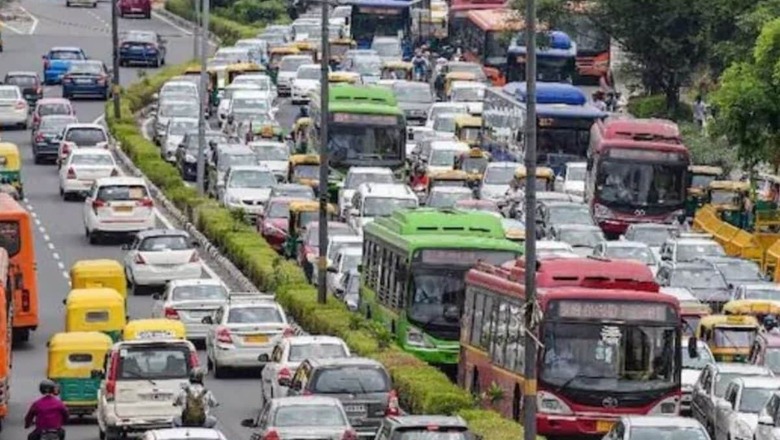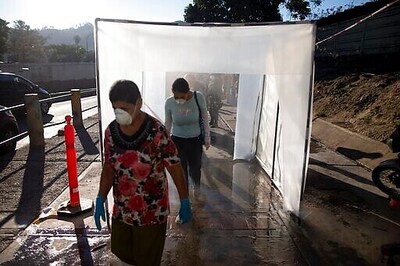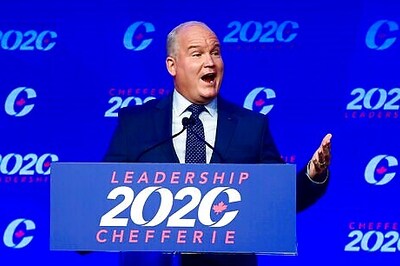
views
Most people in metro cities use multiple modes of transport for their daily commute. For instance, in Mumbai, a person typically walks from home to a bus stop, takes a bus to the railway station to catch a local train, and then finally reaches the destination by taxi or auto rickshaw. However, these multiple modes of transport are often disconnected and poorly managed – causing congestion, increasing travel time, and leading to poor user experience. This encourages people, who can afford it, to choose private vehicles over public transport, which feeds into the vicious cycle of traffic in our cities.
According to a report released last year, Mumbai is the fifth most congested city in the world. Bengaluru and New Delhi follow closely at the 10th and 11th spots respectively.
In a vain attempt to address this issue, several state governments over the last few years have invested large amounts of capital in multiple modes of public transport – making new roads and cycle tracks, increasing the number of buses, adding metro lines etc. But with car ownership numbers rising steadily in India, it seems abundantly clear that this disconnected approach is not working.
If we want our cities to be less congested, and if we want more people to use public transport, we need to stop looking at different modes of transport in silos. We need a broad, integrated strategy.
Fragmented Transport Networks
Our cities have transport services, not networks. These services – roads, railways, metros, buses, autos, taxis, etc – are often operated or regulated by different, independent authorities, each with its own goals and objectives. This means that while individual services are reinforced or improved with time and investment, there is no mandate to look at the broader picture of how these services connect together. This has led to an inefficient overall system with a direct, unfortunate impact on people. For instance, in a city like Mumbai, despite the vast network of trains, public buses and metro lines, lakhs of people prefer using their private vehicles over public transport.
To add to this, most state governments are prioritising investments in infrastructure for cars, with the exception of a handful of cities like Kochi, Bangalore and Chennai that are setting precedents to create strong public transport networks. A recent report estimated that 44 per cent of transport funds are being allocated to roads and only 11 per cent to mass transit. These investments are counterproductive.
There is an urgent need to bring together transport services so that they work in tandem towards a common goal – creating an efficient and sustainable public transit network.
Integrated Transport Authorities
Bringing multiple modes of transport under a singular system can help address current gaps and challenges, making it easier for people to get around the city. City-wide, statutory and integrated transport authorities that work and coordinate with multiple stakeholders should be set up in all major metro cities. Such authorities, responsible for planning, managing and coordinating all aspects of a city’s transport systems, can help enable seamless and integrated services for people. This would create efficient public transport networks that people actually want to use, helping reduce congestion and pollution levels, and creating better, safer cities for people.
Global Precedents
Worldwide, integrated transport authorities have transformed transport networks across various cities by centralising and unifying multiple modes of transport to create people-first, seamless transit experiences.
For instance, in response to London’s unorganised public transportation in the ’90s, Transport for London (TfL), a unified transport authority established in 2000, brought all of the city’s public transport modes such as the underground and overground rail networks, buses, trams, river services, etc under one umbrella. Since then, London’s public transport network has significantly improved in terms of connectivity and people’s experience – more people now use public transport than ever before. Today, TfL even manages the city’s major roads and streets, including cycling and taxi regulation, and traffic management.
In New York, New York’s Metropolitan Transportation Authority (MTA) manages public transport for a population that is comparable to a city like Mumbai. Over the years, the load on public transport infrastructure has decreased as more and more people are choosing to walk and cycle around the city. Similar initiatives in cities like Singapore, Hong Kong and Tokyo have significantly improved public transport systems too.
How Things Stand in India
Despite the potential benefits, implementing similar integrated transport authorities in India has been slow and often piecemeal. Over the last two decades, the Central government has recognised the need to establish a unified transport authority for all major cities through various policies. In 2006, under the National Urban Transport Policy (NUTP), the government recommended setting up Unified Metropolitan Transport Authorities (UMTAs) in all million-plus cities. In response, a few cities formed UMTAs with limited powers and statutory status – merely to fulfil a mandate.
For instance, the Delhi Integrated Multi-Modal Transit System (DIMTS), which was set up in 2006, has limited authority and covers only the city’s bus cluster operations. Similarly, Mumbai’s Unified Mumbai Metropolitan Transport Authority (UMMTA) was formed in 2008 without any statutory powers. It is known that it fails to even hold its quarterly meetings.
In 2017, the Metro Rail Policy hoped to address this gap by making it mandatory for state governments to establish a Unified Metropolitan Transport Authority as a statutory body to prepare a Comprehensive Mobility Plan (CMP) for all cities with a metro-rail plan. This was a welcome decision. However, 5 years on, things are still moving at a snail’s pace and most states have yet to take any solid measures in this direction.
Providing a glimmer of hope, the Karnataka government, in December 2022, passed the long-pending Bangalore Metropolitan Land Transport Authority (BMLTA) Bill to resolve the city’s harrowing traffic and mobility issues. Chaired by the chief minister, BMLTA plans to work on implementing policies for parking, non-motorised transport, transport-oriented development, multi-modal integration and freight in addition to preparing a CMP.
Similarly, the Chennai Unified Metropolitan Transport Authority (CUMTA) held its first meeting in November 2022 and plans to partner with Transport for London (TfL) to prepare a CMP and integrate all modes of transport in Chennai.
Hopefully, this will prompt action from other city and state governments too.
Rahul Kadri is Partner and Principal Architect at IMK Architects. He is a noted expert on subjects like urban development and policy-making, public transport systems, housing and slum redevelopment, ecological planning and new-age healthcare design. Views expressed in the above piece are personal and solely that of the author. They do not necessarily reflect News18’s views.




















Comments
0 comment